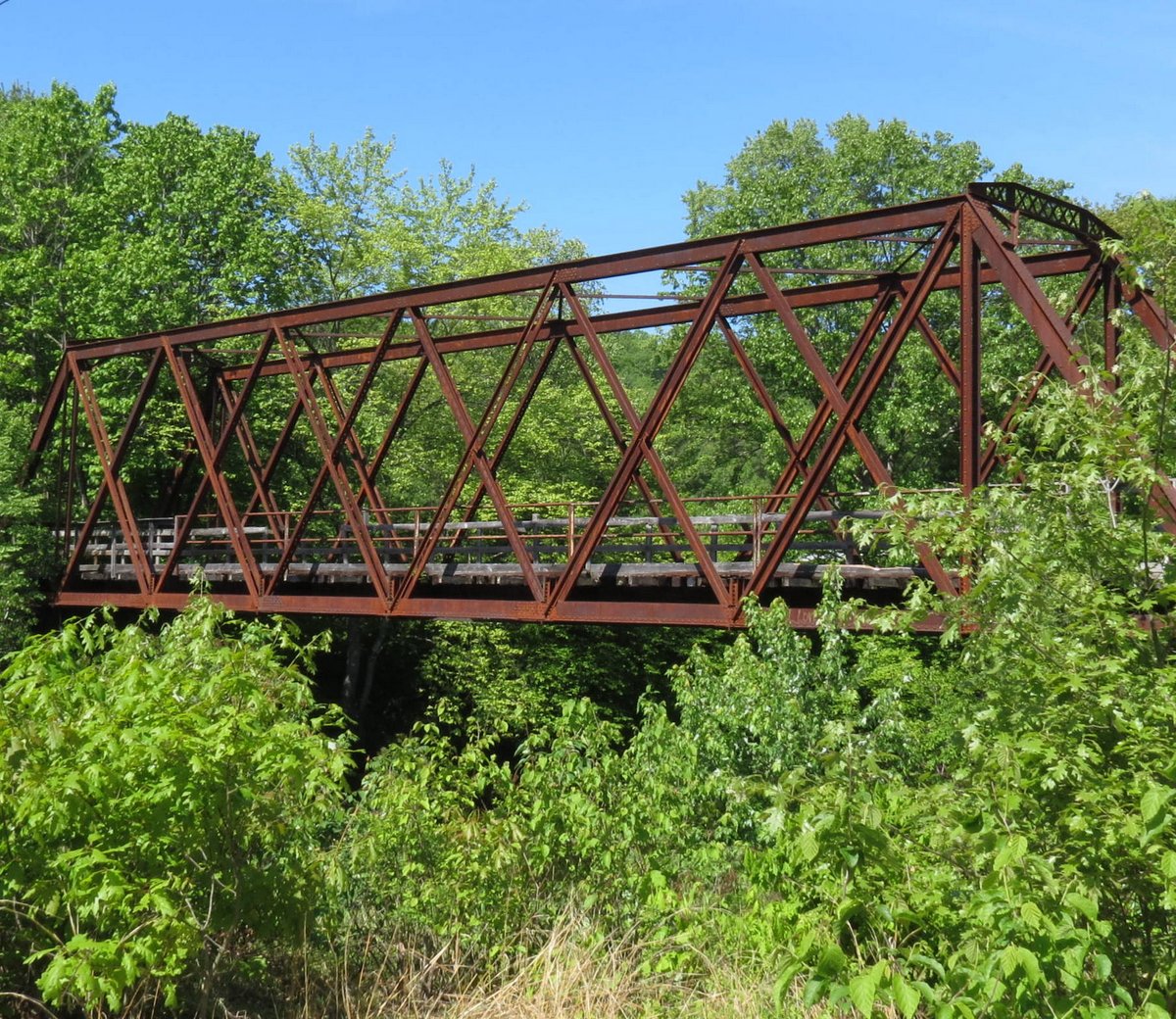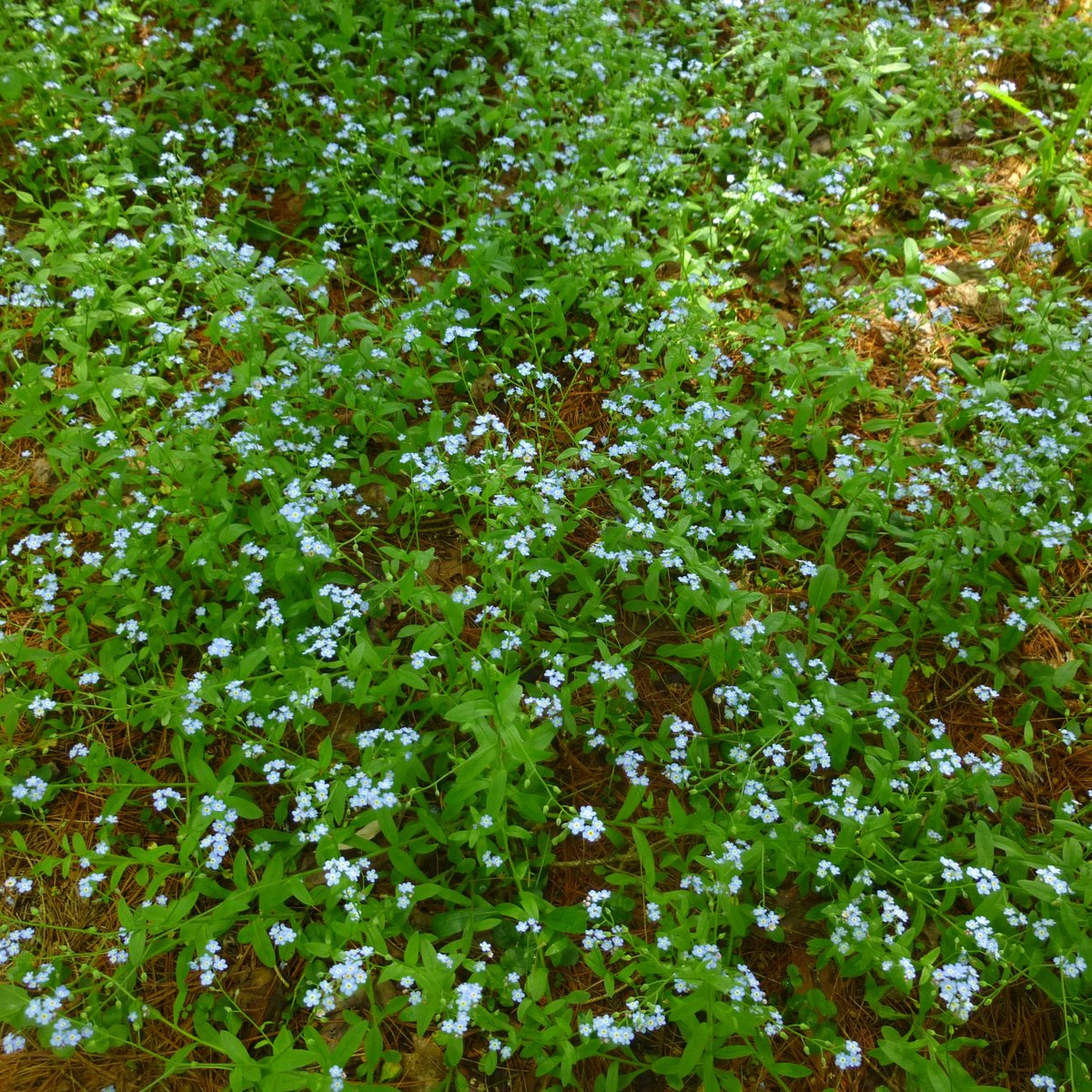
John Burroughs said “To find new things, take the path you took yesterday,” and that was to prove very true last Sunday. I followed a rail trail in Swanzey that I’ve followed more times than I can count but saw many things that I’ve never seen here before.

Male American Hazelnut catkins swayed lazily in the slight breeze. They had lengthened to three times their winter length and were still heavy with pollen.

The tiny female flowers were waiting for a good dose of that pollen so they could become the hazelnuts that so many birds and animals eat.

There is a nice little box culvert out here that I always like to stop and see. There was quite a lot of water in the stream it carries safely under the railbed on this day. It’s amazing to think these culverts are still keeping railbeds from washing away 150 years after they were built, and without any real maintenance.

The stream rushes off to the Ashuelot River, which is out there in the distance.

The first thing I saw that I had never seen here were trout lily leaves (Erythronium americanum). I didn’t see any flowers but I found the leaves growing all along the trail, and I couldn’t believe that I hadn’t ever seen them.

You can get a glimpse of the Ashuelot River here and there along the trail. This was where I was to get another surprise. I saw something swimming quickly toward me from those fallen trees you see in this photo. I thought it was ducks but I couldn’t see anything except ripples.

And then up popped a muskrat. At least I’m fairly certain it was a muskrat. Though it never showed me its tail it was much smaller than a beaver and nowhere near as skittish. It saw me up on the embankment but still just sat and fed on what looked like grasses. It probably knew I was far enough away; this photo isn’t very good because my camera was at the limit of its zoom capability. At least you can see the critter, and that matters more to me than a technically perfect shot.

I knew that apple moss (Bartramia pomiformis) grew here and I was able to find it. Its reproduction begins in the late fall and immature spore capsules (sporophytes) appear by late winter. When the warm rains of spring arrive the straight, toothpick like sporophytes swell at their tips and form tiny globes that always look like pearls to me, but someone thought they looked like apples and the name stuck.

Beech buds (Fagus grandifolia) are beginning to lose their straightness and that means the beautiful new spring leaves will be appearing before long. Beech bud break begins when the normally straight buds start to curl, as in the above photo. The curling is caused by the cells on the sunny side of the bud growing faster than those on the shaded side. This creates a tension that curls the bud and eventually causes the bud scales to pull apart so the new leaves can emerge. The buds literally “break” and at the bud’s location on the tree branch an entire year’s new leaves and stems will often grow from a single bud.

New maple leaves were everywhere but every one I saw was green. That was unusual because young maple leaves are often red for a while.

Raspberry plants were also showing their new leaves but blackberry buds had barely broken.

I saw native cherries in all stages of growth. Cherries usually leaf out and blossom quite early.

Some of the willows along the trail had thrown in the towel and were finished for this year.

This is what the flower buds of a shadbush (Amelanchier canadensis) look like. After shadbushes come the cherries, closely followed by the crab apples and apples, and then the peaches and plums. Shadbushes bloom earlier than the other shrubs and trees but are often still in bloom when the others bloom. The flowers appear before the leaves, unlike apples and some native cherries. Small, reddish purple to purple, apple shaped fruits follow in June. The fruit is a berry similar in size to a blueberry and has from 5-10 seeds. They taste best when they are more purple than red. Shadbush flowers are pretty but their fragrance isn’t very appealing. I can’t remember ever seeing them bloom along this trail but there they were.

Forsythia has escaped someone’s garden and was blooming happily beside the trail. Another surprise.

Trailing arbutus (Epigaea repens) is also called mayflower because that’s often when its small white to pink, very fragrant flowers appear, but here they were blooming beside the trail. This is another plant I can’t remember ever seeing out here before. Trailing arbutus was once collected into near oblivion but these days it can be found at many nurseries so there is no longer any reason to dig it up. Since it’s very fussy unless it’s given the right amount of light, water, nutrients and soil type it won’t grow except where it chooses to anyway. The reason it was collected so much was because its small pink to white, very fragrant flowers were used in nosegays.

I reached the trestle and found that someone, most likely a snowmobile club, had overlaid the flooring, which was starting to rot out. This was a another welcome surprise because that little square that juts out to the right was a hole right through the boards. It’s quite a drop down to the river.

This trestle is the last one I know of with its tell tales still in place. These are pencil size pieces of soft wire that hang down low enough to hit the head of anyone standing on top of a freight car. They would warn the person, or “tell the tale” of an upcoming trestle. I can walk from the trestle to this one in under a minute, so whoever was on top of the train wouldn’t have had much time to duck before they’d hit the trestle, and that would have been too bad. Tell tales used to hang on each end of every trestle in the area, but this is the last one I know of.

The river has come up some since the recent snowfall and a few rain showers. I was surprised I didn’t see any kayakers. They like to paddle the river in spring when the water is high because in that way they can float over all the submerged fallen trees.

It still has to gain more run off before it reaches its average height, by the looks. We’re still in a drought according to the weather people.

I was surprised to find a small colony of bloodroot plants (Sanguinaria canadensis) as I was leaving. This is another plant I’ve never seen growing here, so this day was packed full of surprises.

Bloodroot flowers don’t usually open on cloudy days and I couldn’t tell if this one was opening or closing, but I was happy to get at least a glimpse of its beautiful inside. These flowers aren’t with us long.
In a forest of a hundred thousand trees no two leaves are identical, and no two journeys along the same path are alike. ~Paulo Coelho
Thanks for stopping in.




























































